笔记列表:
使用Web界面的Crud操作
在上一章中,我们学习了如何使用Arangosh命令行对文档执行各种操作。我们现在将学习如何使用web界面执行相同的操作。首先,请填写以下地址-http://your_server_ip:8529/_db/song_collection/_admin/aardvark/index.html#在浏览器的地址栏中登录。您将被引导到以下登录页面。
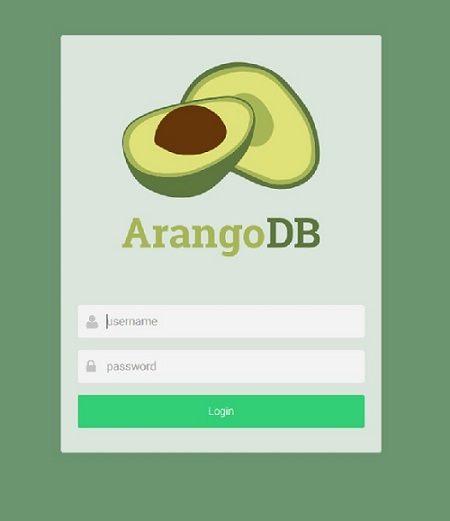
现在,输入用户名和密码。
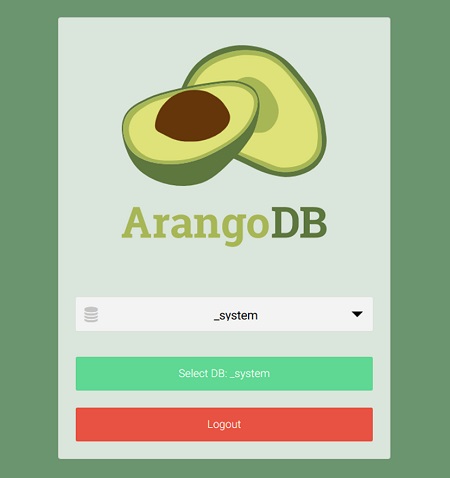
If it is successful, the following screen appears. We need to make a choice for the database to work on, the _系统 database being the default one. Let us choose the 宋琰集 database, and click on the green tab −
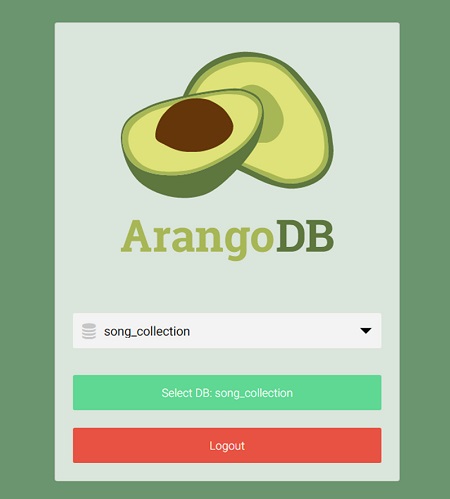
创建集合
在本节中,我们将学习如何创建集合。按顶部导航栏中的“收藏”选项卡。
Our command line added songs collection are visible. Clicking on that will show the entries. We will now add an 艺术家的 collection using the web interface. Collection 歌曲 which we created with Arangosh is already there. In the Name field, write 艺术家 in the 新系列 dialog box that appears. Advanced options can safely be ignored and the default collection type, i.e. Document, is fine.
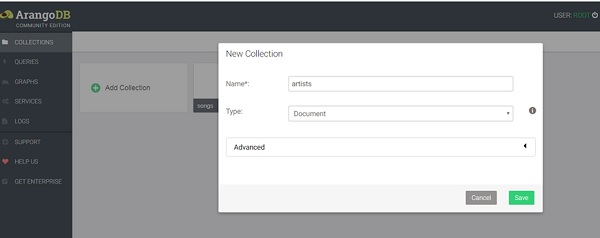
单击Save按钮将最终创建集合,现在这两个集合将在此页面上可见。
用文档填充新创建的集合
You will be presented with an empty collection on clicking the 艺术家 collection −
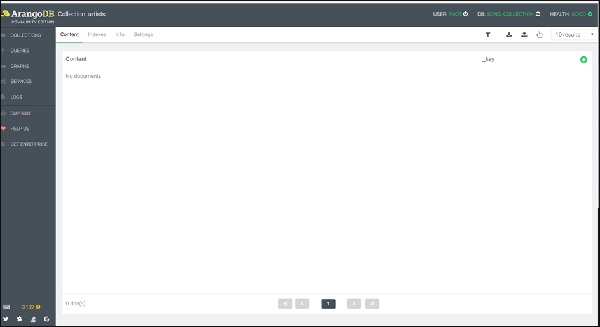
To add a document, you need to click the + sign placed in the upper right corner. When you are prompted for a _钥匙, enter 和蔼可亲的秃头 as the key.
Now, a form will appear to add and edit the attributes of the document. There are two ways of adding attributes: 图形化 and 树. The graphical way is intuitive but slow, therefore, we will switch to the 代码 view, using the Tree dropdown menu to select it −
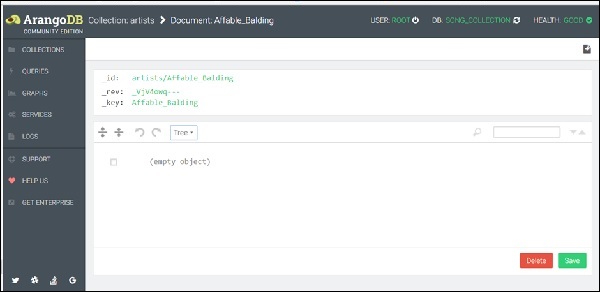
为了简化这个过程,我们以JSON格式创建了一个示例数据,您可以将其复制然后粘贴到查询编辑器区域−
{“艺术家”:“约翰尼·默瑟”,“头衔”:“和蔼可亲的秃顶我”,“作曲家”:“罗伯特·埃米特”
(注:只能使用一对花括号;请参见下面的屏幕截图)
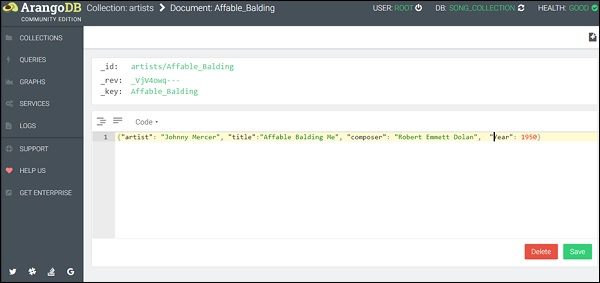
You can observe that we have quoted the keys and also the values in the code view mode. Now, click 保存. Upon successful completion, a green flash appears on the page momentarily.
如何阅读文档
要阅读文档,请返回“集合”页。
When one clicks on the 艺术家 collection, a new entry appears.
如何更新文档
编辑文档中的条目很简单;只需在文档概述中单击要编辑的行。这里同样会显示与创建新文档时相同的查询编辑器。
删除文档
您可以按“-”图标删除文档。每个文档行的末尾都有此符号。它将提示您确认以避免不安全的删除。
Moreover, for a particular collection, other operations like filtering the documents, managing indexes, and importing data also exist on the 收藏概述 page.
在接下来的章节中,我们将讨论Web界面的一个重要特性,即AQL查询编辑器。
